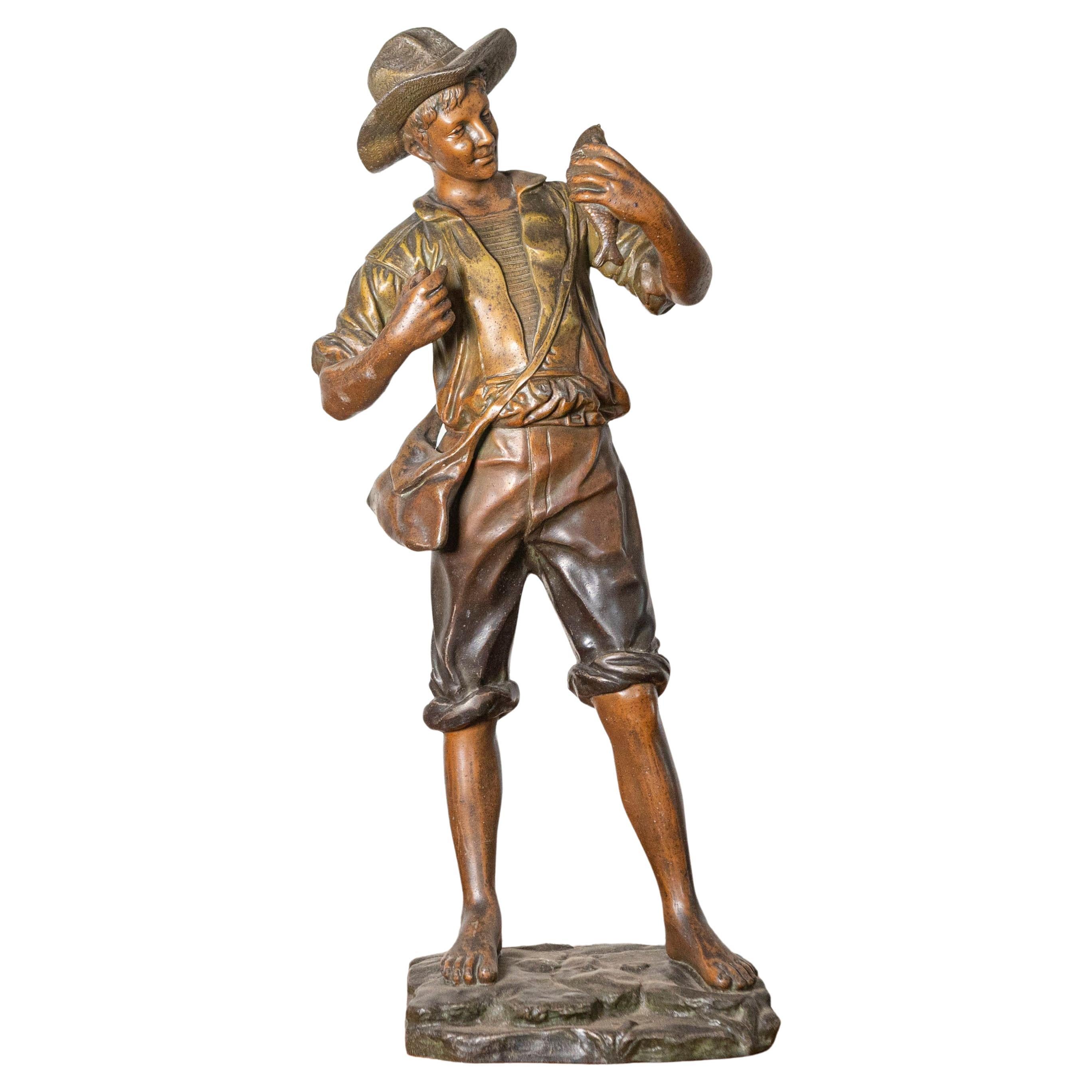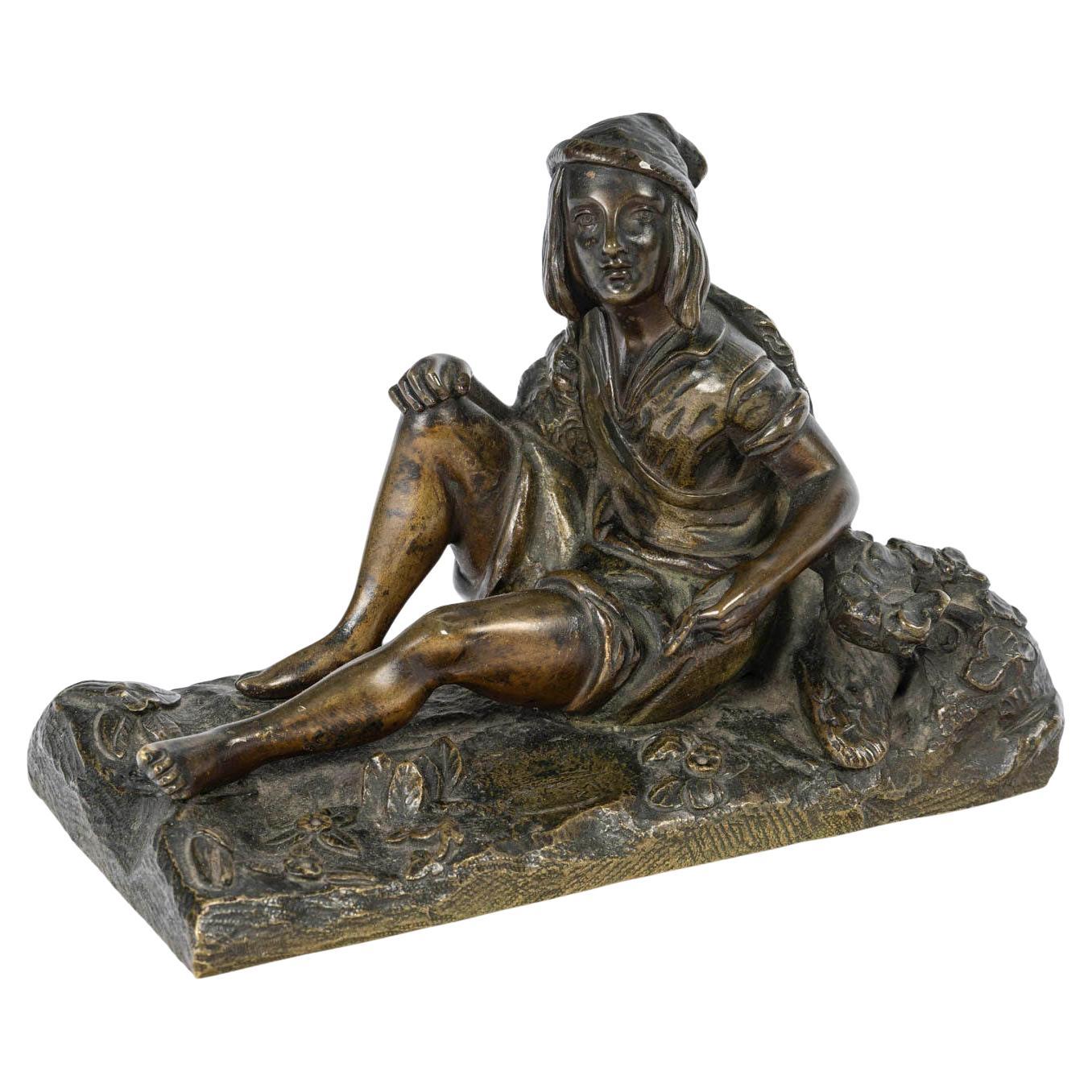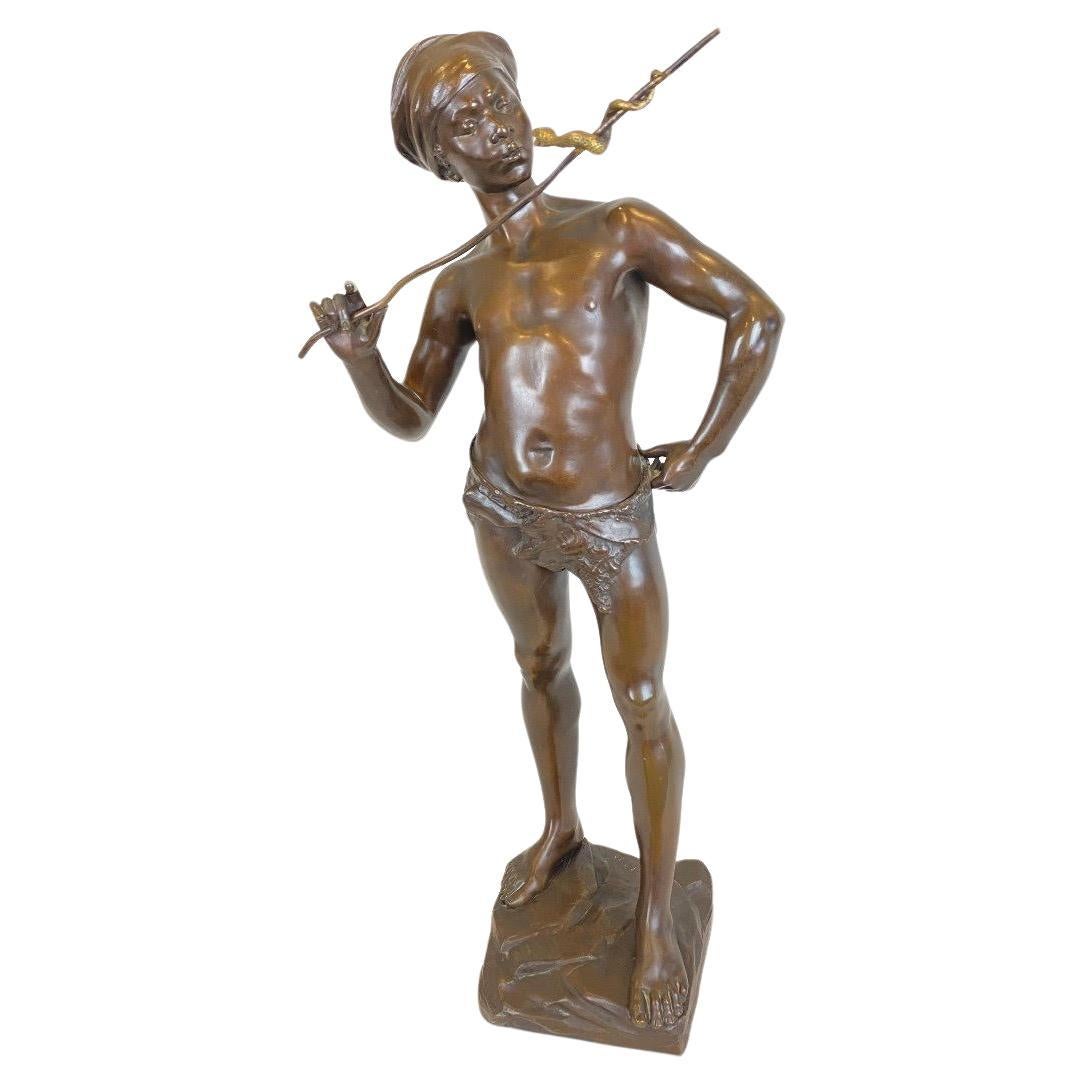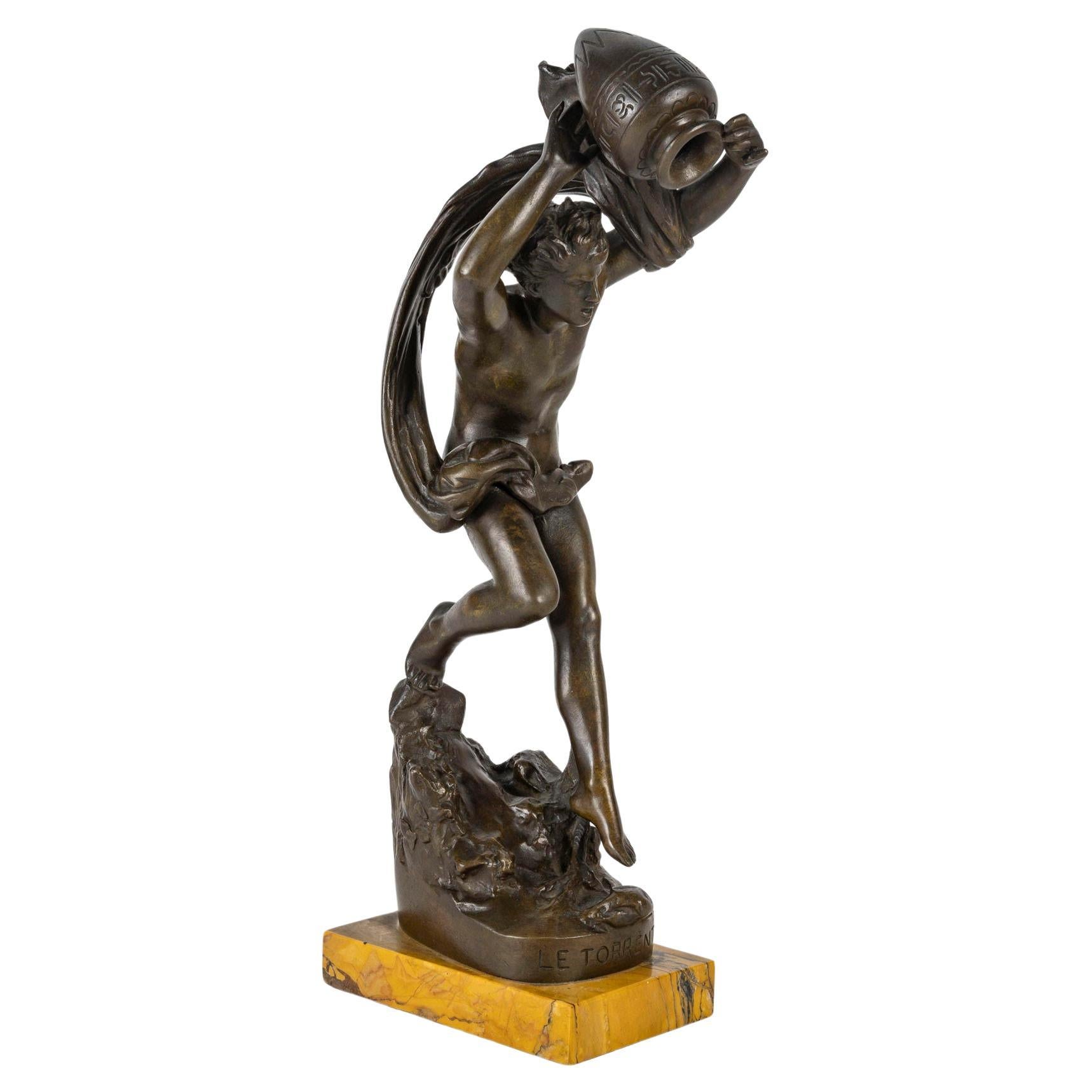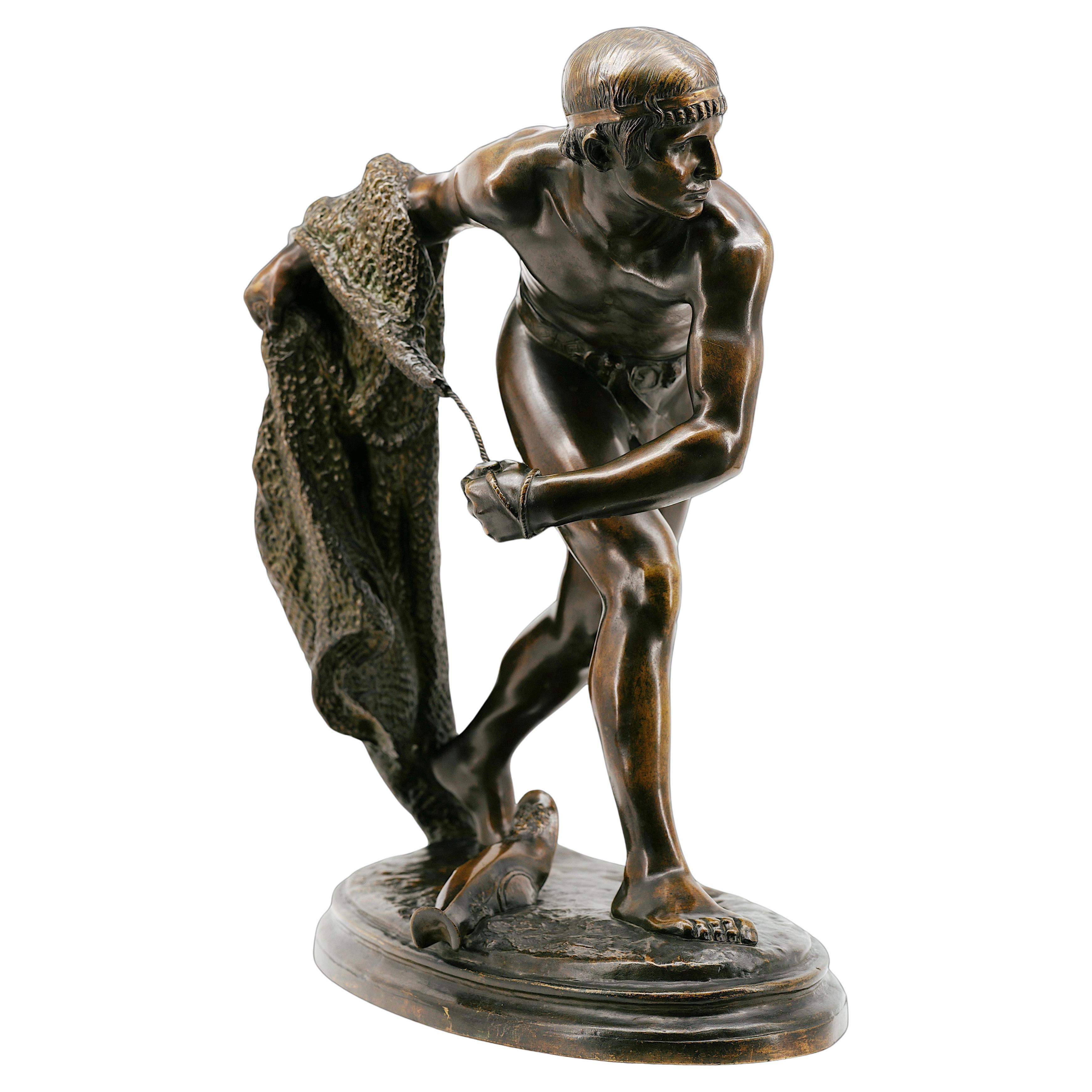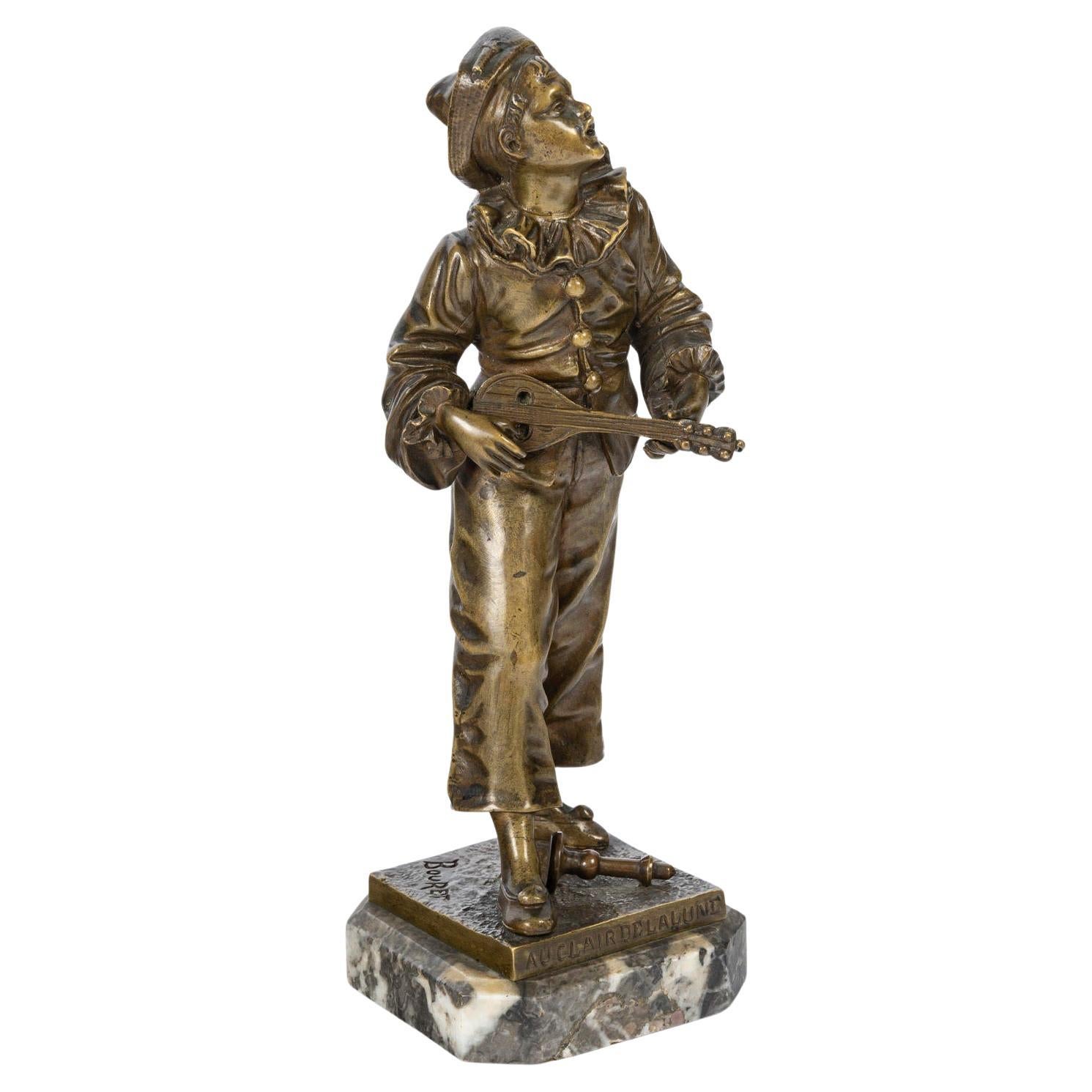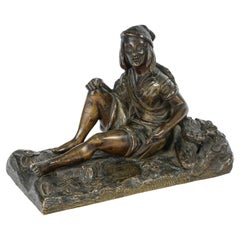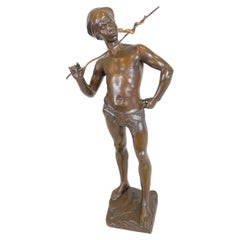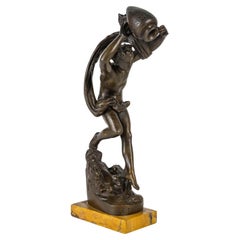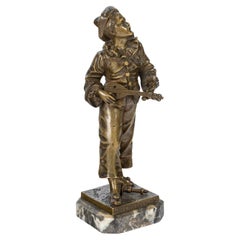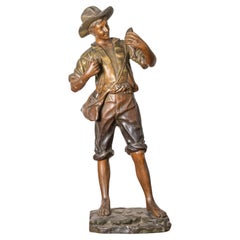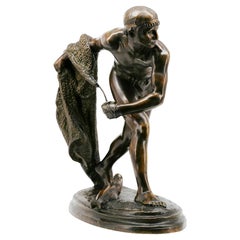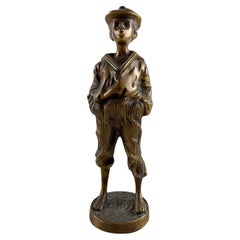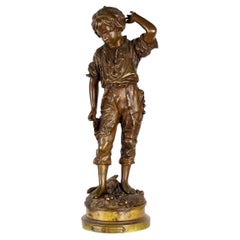Items Similar to Sculpture in Regula Representing a Poulbot, Circa 1900-1920.
Want more images or videos?
Request additional images or videos from the seller
1 of 10
Sculpture in Regula Representing a Poulbot, Circa 1900-1920.
$1,914.72
£1,422.32
€1,600
CA$2,641.50
A$2,903.73
CHF 1,526.07
MX$35,261.87
NOK 19,037.31
SEK 18,036.52
DKK 12,180.03
About the Item
Sculpture in regula representing a Poulbot, circa 1900-1920.
A regule sculpture of a Poulbot, a newspaper seller, circa 1900-1920, Napoleon III style.
h: 53cm, w: 23cm, d: 23cm
- Dimensions:Height: 20.87 in (53 cm)Width: 9.06 in (23 cm)Depth: 9.06 in (23 cm)
- Style:Napoleon III (Of the Period)
- Materials and Techniques:
- Place of Origin:
- Period:
- Date of Manufacture:circa 1900-1920
- Condition:Wear consistent with age and use.
- Seller Location:Saint-Ouen, FR
- Reference Number:1stDibs: LU1530239368742
About the Seller
4.8
Platinum Seller
Premium sellers with a 4.7+ rating and 24-hour response times
Established in 2003
1stDibs seller since 2015
354 sales on 1stDibs
Typical response time: 1 hour
- ShippingRetrieving quote...Shipping from: Saint-Ouen, France
- Return Policy
Authenticity Guarantee
In the unlikely event there’s an issue with an item’s authenticity, contact us within 1 year for a full refund. DetailsMoney-Back Guarantee
If your item is not as described, is damaged in transit, or does not arrive, contact us within 7 days for a full refund. Details24-Hour Cancellation
You have a 24-hour grace period in which to reconsider your purchase, with no questions asked.Vetted Professional Sellers
Our world-class sellers must adhere to strict standards for service and quality, maintaining the integrity of our listings.Price-Match Guarantee
If you find that a seller listed the same item for a lower price elsewhere, we’ll match it.Trusted Global Delivery
Our best-in-class carrier network provides specialized shipping options worldwide, including custom delivery.More From This Seller
View AllSculpture in Patinated Bronze, 20th Century, Napoleon III Style.
Located in Saint-Ouen, FR
Sculpture in patinated bronze, representing a young man from antiquity sitting in nature, 20th century, Napoleon III style.
A patinated bronze sculpture of a young man from antiquit...
Category
20th Century French Napoleon III Figurative Sculptures
Materials
Bronze
Sculpture in Patinated Bronze by Adolphe Jean Lavergne, 19th Century.
Located in Saint-Ouen, FR
Sculpture in patinated bronze by Adolphe Jean Lavergne, 19th century.
Sculpture by Adolphe Jean Lavergne in patinated bronze, orientalist bronze, 19th century, Napoleon III period.
...
Category
Antique 19th Century French Napoleon III Figurative Sculptures
Materials
Bronze
Sculpture by U.Basset, Le Torrent, Bronze Sculpture, 19th Century, Napoleon III.
Located in Saint-Ouen, FR
Sculpture by U.Basset, Le Torrent, bronze sculpture, 19th century, Napoleon III.
Sculpture by the artist U.Basset, Le Torrent, 19th century Napoleon III period sculpture, in bronze,...
Category
Antique 19th Century French Napoleon III Figurative Sculptures
Materials
Marble, Bronze
Sculpture in Patinated Bronze, Signed Bouret, XXth Century, Art Deco Style.
Located in Saint-Ouen, FR
Sculpture in patinated bronze representing Pierro in the moonlight, signed Bouret, XXth century, Art Deco style.
A patinated bronze sculpture of Pierro in the moonlight, signed Bour...
Category
20th Century French Art Deco Figurative Sculptures
Materials
Bronze
Regule Sculpture, Griotte Marble Base, 19th Century, Napoleon III Period.
Located in Saint-Ouen, FR
Regule sculpture, Griotte marble base, 19th century, Napoleon III period.
A regule sculpture of a child with a basket, 19th century, Napoleon III period, cherry coloured marble base...
Category
Antique 19th Century French Napoleon III Figurative Sculptures
Materials
Marble, Metal
Bronze Sculpture by Emmanuel Villanis, 19th Century.
By Emmanuel Villanis
Located in Saint-Ouen, FR
Bronze sculpture by Emmanuel Villanis, 19th century.
Bronze sculpture by Emmanuel Villanis, Napoleon III period, 19th century.
Photos:(c)inu.studio_art
H: 47cm, W: 18cm, D: 13cm
Category
Antique 19th Century French Napoleon III Figurative Sculptures
Materials
Bronze
You May Also Like
19th Century French Bronze Sculpture
Located in Atlanta, GA
This exquisite 19th-century French bronze sculpture captures the essence of rural life through the figure of a young peasant boy. The boy is depicted with a charming, rustic appeal,...
Category
Antique 19th Century Italian Figurative Sculptures
Materials
Metal, Bronze
Edme Anthony NOEL French Art Deco Bronze Retiary Sculpture, 1875
By Edme Anthony Paul Noel
Located in Saint-Amans-des-Cots, FR
French bronze retiary sculpture by Edmé-Anthony-Paul NOEL, known as Tony Noël, France, ca.1875. Height : 21.85"(55.5cm), Width : 19.5"(49.6cm), Depth : 10.6"(27cm). Signed "Tony Noël...
Category
Antique Late 19th Century French Napoleon III Figurative Sculptures
Materials
Bronze
Bronze Sculpture Attributed to Vaclav Szczeblwski
By Vaclav Cigler
Located in Palermo, IT
Bronze sculpture attributed to Vaclav Szczeblwski
(Poland, 1875 - 1901).
Category
Antique 1890s Polish Figurative Sculptures
Materials
Bronze
$239 Sale Price
42% Off
French Bronze, Boy Sculpture, Charles Anfrie, 19th Century
By Vrai Bronze B.D., Charles Anfrie
Located in Lisbon, PT
This 19th-century bronze sculpture titled "Un Accident" captures a moment of innocent confusion through the detailed depiction of a barefoot boy in rustic clothing, scratching his he...
Category
Antique 19th Century French Napoleon III Figurative Sculptures
Materials
Metal, Bronze
$5,680 Sale Price
20% Off
Antique Bronze Sculpture By Henri Godet (1863 - 1937), Paris, 1910s
By Henri Godet
Located in Greven, DE
Antique bronze sculpture on a marble base by the french sculptor Henri Godet (born in Paris March, 5th 1863 - Vincennes 1937).
Depiction of a young shoe shiner boy, "Cireur de chaussures".
He wears tattered clothes with holes and is barefoot as a poor boy used to look on the streets of the former Paris.
Under his left arm he carries several shoe cleaner...
Category
Early 20th Century French Late Victorian Figurative Sculptures
Materials
Marble, Bronze
19th Century French Sculpture
Located in Atlanta, GA
This 19th-century French sculpture features a young drummer, captured in a moment of intense focus and energy. Rendered in rich patinas of bronze, the figure is dressed in historical...
Category
Antique 19th Century French Napoleon III Figurative Sculptures
Materials
Bronze
More Ways To Browse
Bronze Fisherman
Bronze Gladiator
Bronze Sculpture Nymph
Bronze Sculpture Of Mercury
Chariot Sculpture
Fairy Sculpture
Farmer Sculpture
Geisha Study
Hand-Carved Wood Figures
Horn Cornucopia
Italian Marble Foot
Italian Topiary
Lladro Of Spain
Midcentury Reclining Sculpture
Object Los Angeles
Pieta Sculpture
Prayer Sculpture
Roman Bronze Statue
